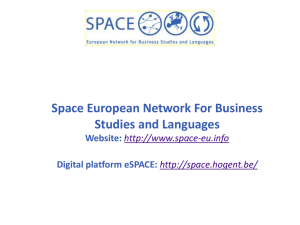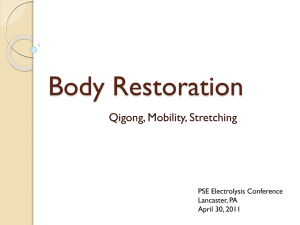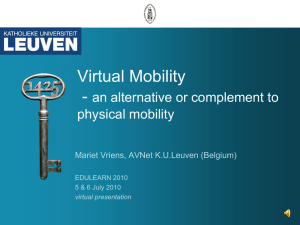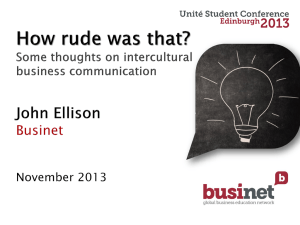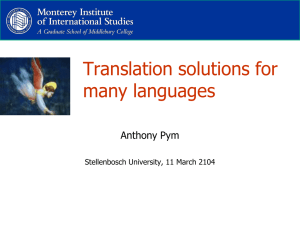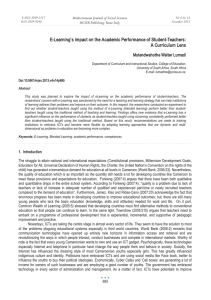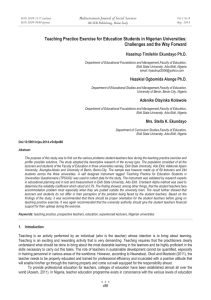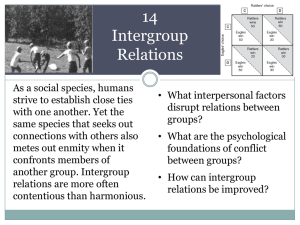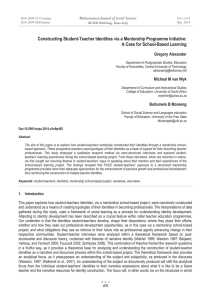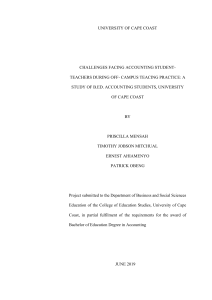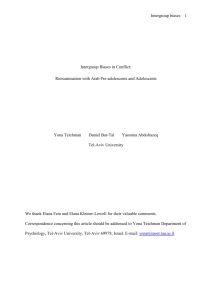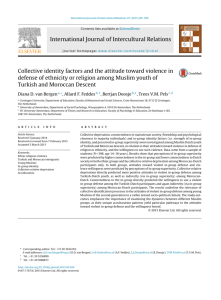Présentation PowerPoint
advertisement
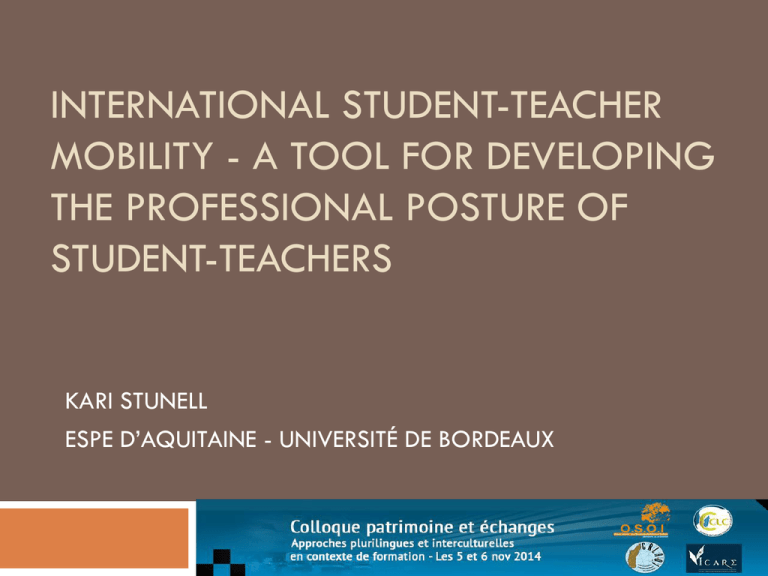
INTERNATIONAL STUDENT-TEACHER MOBILITY - A TOOL FOR DEVELOPING THE PROFESSIONAL POSTURE OF STUDENT-TEACHERS KARI STUNELL ESPE D’AQUITAINE - UNIVERSITÉ DE BORDEAUX TTIMS: Teacher Training in Multicultural Settings Aims To provide trainee teachers with knowledge on intercultural issues in school and society and engage them in working in a culturally diverse society. To introduce these trainee teachers to the major principles, strategies and tools of intercultural pedagogy and intercultural learning. To lead trainee teachers from a student-centered perspective to a vision of themselves as teachers. (http://ttims.espe-aquitaine.fr/). Organisers Teacher educators from Austria, France, Great Britain and Spain. TTIMS: Teacher Training in Multicultural Settings Participants Four student-teachers from five European teacher education institutions. Activities A two-week period of student mobility. Carrying out class observations in one of the partner countries from a child-centered perspective. Productions Video journal Poster Group Prezi presentation Rationale behind the observations To be in a situation as similar as possible to that experienced by the foreign children they were shadowing (i.e. in a situation which was linguistically and culturally ‘other’). To observe the workings of an education system other than their own. To provide an impetus for considering their own education system from an external perspective. To lead student-teachers towards a positive attitude towards the presence of cultural and linguistic diversity in teaching contexts. Student mobility and intercultural understanding: theoretical support “Transnational and intergroup contact are important mechanisms for identity-formation and reducing intergroup bias” Mitchell 2012:49 Social communication theory (Deutsch et al. 1967) & Contact hypothesis (Hewstone & Brown 1986) face-to-face interactions between members of socially distinct groups as a means of forging a sense of community Common in-group identity model (Stephen 1985, Gaertner et al. 2012) “under certain circumstances direct contact between in-group and outgroup members may have a transformative effect leading members of distinct groups to recategorise themselves as a single group” Gaertner et al. 2012: 3 Student mobility and intercultural understanding: empirical support Student mobility is a tool for enhancing European integration through the emergence of a sense of European identity amongst participants (King & Ruiz-Galices 2003, Green 2007, Sigalas 2010, Van Mol 2011). This new identity emerges as a consequence of contact between members of culturally diverse groups (out-groups). Real communication with the other: allows the student to recognise cultural diversity – including the diversity of his/her culture for others. enables the student to develop a new vision of him/herself which is no longer centered on his/her culture of origin. Papatsiba (2003) Recognition of ‘self’ and ‘other’ in the TTIMS project The TTIMS project was interested in recognition of the diversity of both self and other in terms of educational systems. Double decentration of self in the observational situation as a trigger for intercultural reflection on education systems and philosophies – those of the self and the other. Distancing the student-teacher from their own education system inviting engagement in critical reflection questioning of norms. The shock of intercultural contact is not always positive i.e. it does not automatically lead to the decentralization of cultural perspective necessary for opening up to the ‘other’ and for critical reflection on the self. TTIMS aims according to Papatsiba 2003 Student-teachers also need to engage in constructive debate concerning their observations. To do so they need to be in a situation where they feel secure enough to be open to criticism. The TTIMS student-teachers needed to be encouraged to see themselves in terms of a new in-group, as well as seeing themselves as members of their separate institutional in-groups (who were in an out-group relationship to each other). Constructive critical reflection at the level of studentteachers needs to be fed by knowledge from external sources. Means of ensuring development of professional posture within TTIMS Actions Concentration on collaborative group work in mixed nationality groups Periods of whole group feedback led by one or other of the five teacher educators involved in the project. Aims To foster a new group identity To encourage international interaction. To guide the critical reflections in a positive direction To point student-teachers towards appropriate external sources of knowledge. The four key attributes of teacher professional posture Distancing from the system Critical self-reflection Inter-group interaction / Forge a new in-group Theoretical information from external sources Methodology: online questionnaire Online questionnaire with 14 closed questions and 2 open questions. We are concerned with the first open question “summarize three main positive aspects of the intensive program for you personally”. 59 comments classified according to the following criteria: reflective practices value of group discussion / forging new professional networks reference to theory learning about other education systems diversity other Results 20 18 16 14 12 10 8 6 4 2 0 Reflective practices Networks Theory Learning about other systems Diversity Figure 1: Distribution of comments across categories Other Reflection Opportunity to observe practice in French schools and reflect on differences. Discussion with teachers in training from different countries to obtain a new perspective. My teaching style will evolve with the different exchanges I had during the project. I think now I must every time to call into question my teaching practice. Exchange of perspectives on teaching and learning by participants from different countries - challenging own view. Observation in a different setting then interpretation of context. Value of group discussion / forging new professional networks Getting ideas from other students on intercultural education Very interesting reflections between participants. Variety of tasks and group mixing to widen the experience. I have established a nice relationship with peers from different countries. Find new international friends and build up international contacts. To have the opportunity to meet colleagues and keep this relationship. Reference to theory Developing ideas on inclusive teaching from an international viewpoint by combining theoretical framework and school observations. Learning about other education systems Learn more about their educational systems. Getting to know a different school system. Getting a practical insight into the French education system. Meeting a new culture and a new school system. Knowledges about foreign system. Have learnt a lot about the other ways of teaching in different countries in Europe. Conclusions Acquiring the capacity for critical self-reflection, communicating with in-group and out-group members, building networks, turning to theory for insight and understanding the value of distancing oneself from the system of which one is a part – are all essential for the development of teacher professional posture which, in turn, enables construction of a strong professional identity. This brief analysis of studentteacher questionnaire responses suggests that guided student-mobility may be one way of fostering the acquisition of these key attributes. References Deutsch, K. et al. (1967) Political Community and the North Atlantic Area, New York: Greenwood Press Gaertner, S. et al. (2012) Common in-group identity model. In Christie (ed.) The Encyclopedia of Peace Pyschology. Malden, MA: Wiley-Blackwell Green, D. (2007) The Europeans: Political Identity in an Emerging Polity. Boulder: Lunne Rienner Hewstone, M. & Brown, R. (eds.) (1986) Contact and conflict in intergroup encounters. London: BLackwell King, R. & Ruiz-Gelices, E. (2003) International Student Migration and the ‘Year Abroad’: Effects on European Identity and Subsequent Migration Behaviour. International Journal of Population Geography, 9 (3), p229-252. Mitchell, K. (2012) Student mobility and European Identity: Erasmus Study as a civic experience? Journal of Contemporary European Research, 8 (4), p490-518. Papatsiba, V. (2003) Des étudiants européens. Erasmus et l'aventure de l'altérité. Berne : Peter Lang Sigalas, E. (2010) Cross-border Mobility and European Identity: The Effectiveness of Intergroup Contact During the ERASMUS Year Abroad. European Union Politics, 11 (2) p241-265 Stephen, W. (1985) Intergroup relations. In Lindzey, G. & Aronson, E. (ed.) Handbook of social psychology. New York: Random House Van Mol, C. (2011) The Influence of European Student Mobility on European Identity and Subsequent Migration Behaviour. In Dervin, F. (ed.) Analyzing the consequences of academic mobility and migration. Newcastle: Cambridge Scholars Publishing. http://ttims.espe-aquitaine.fr
